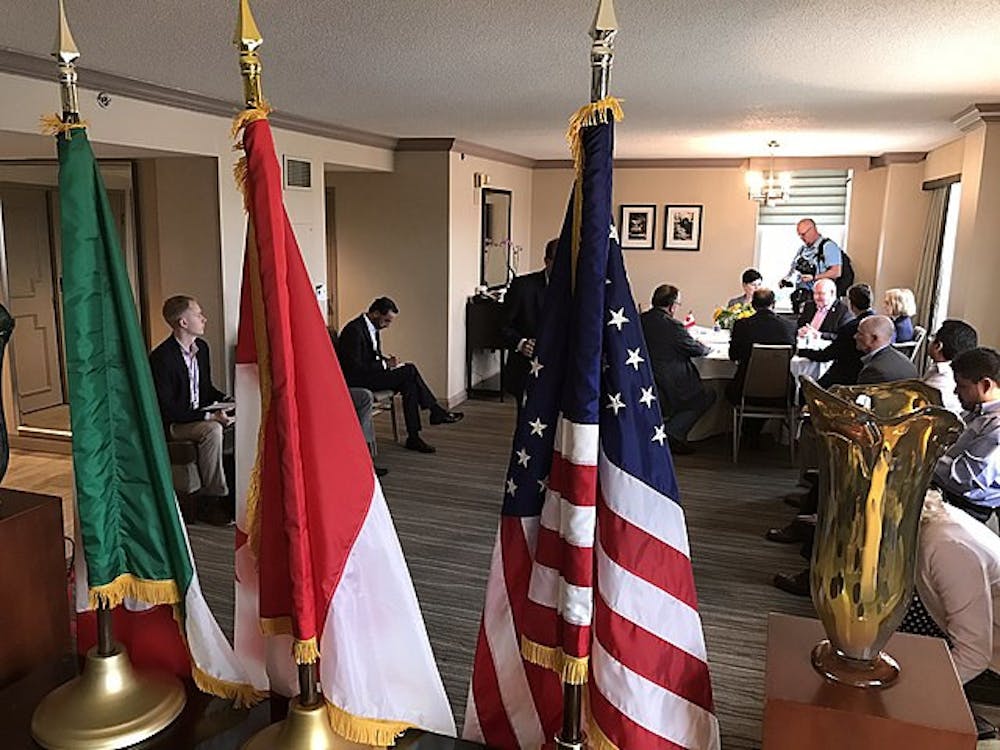By Parisa Burton
Nation & World Editor
President Trump declared steep tariffs on imports from Mexico, Canada and China, the United States’ top trading partners, on Feb. 1. These countries account for nearly half of U.S. imports. The tariffs, which were set to take effect on Feb. 2, included a 25% tariff on goods from Mexico and Canada and 10% on goods from China, according to Reuters.
According to The New York Times, Trump also issued two official proclamations imposing a 25% tariff on steel and aluminum from all countries. The incentive behind Trump’s actions is to prohibit the flow of fentanyl and migrants to the U.S.
Retaliatory tariffs were threatened by Canada and Mexico, and China warned it would contest this decision, indicating the potential for a trade war. As such, Canadian Prime Minister Justin Trudeau confirmed he would impose a matching 25% tariff on U.S. imports totaling up to $155 billion. Mexico’s President Claudia Sheinbaum also announced retaliatory tariffs.
China revealed its plan to implement a “15% tariff on coal and liquified natural gas products” and a “10% tariff on crude oil, agricultural machinery and large-displacement cars,” AP News reported.
“The immediate effect…is going to be inflation, higher prices, a disruption of several industries that are so closely linked to Canada and Mexico,” said New York Times journalist Matina Stevis-Gridneff for PBS News.
Goods like avocados will become more expensive, as Mexico accounts for 90% of all imported avocados to the U.S., according to Reuters. The car manufacturing industry is also at risk, as vehicle parts cross the U.S.-Mexico and Canada border several times before assembly is completed. According to the BBC, “the average U.S. car price could increase by $3,000.”
Trump agreed to forestall the potential trade war for 30 days after negotiating a deal with Mexico and Canada to “boost border security and combat drug trafficking,” according to AP News. The tariffs in China, however, went into effect on Feb. 4.
Sheinbaum agreed to send 10,000 national guard members to the U.S.-Mexico border to affirm her cooperation. In exchange, Trump has “promised” the U.S would vamp up its efforts to combat the flow of high-powered weapons from the U.S. into Mexico to keep them out of the hands of cartel gunmen.
Canada has also increased its surveillance of the Canada-U.S.border, deploying a Black Hawk helicopter to monitor the area for “smuggling and illegal crossings.”
Stevis-Gridneff revealed that it remains unclear whether the intensified efforts by Mexico and Canada are enough to permanently change Trump’s stance on imposing tariffs. However, Trump stated that the 30 day delay would buy time for the U.S. to determine whether an economic deal could be made with Canada.
The Tax Foundation estimated that imposing tariffs on the three nations would reduce the U.S.’s long-term economic output by 0.4% and increase taxes by over $800 per household in the U.S. in 2025.
Businesses are hesitating to rely on U.S. markets and are postponing investments in new plants and workers until the outcome is clear. Uncertainty persists over whether negotiations with Mexico and Canada to address drug trafficking and illegal border crossing will successfully prevent a trade war between these partners.







